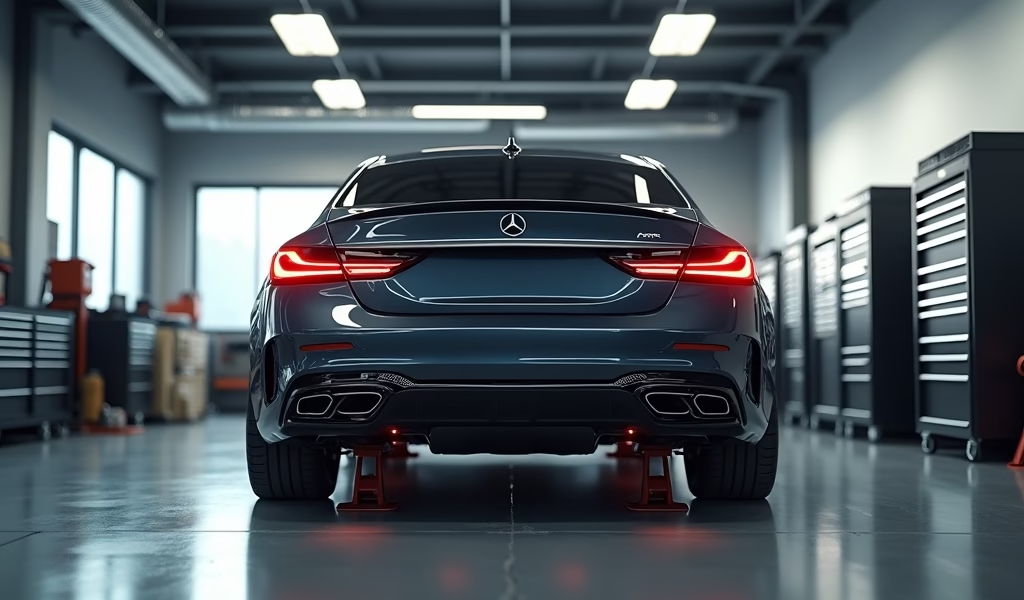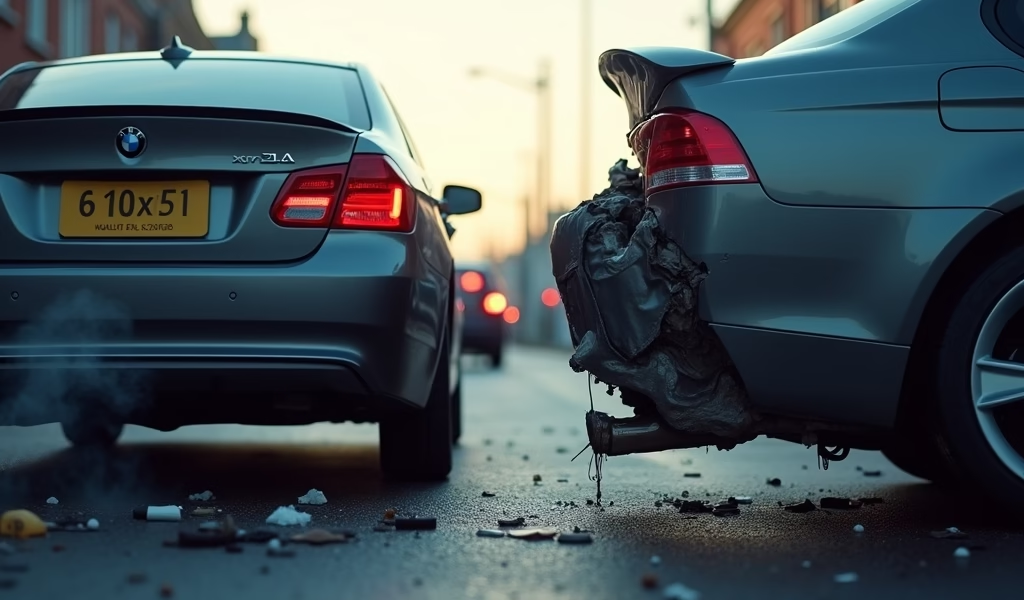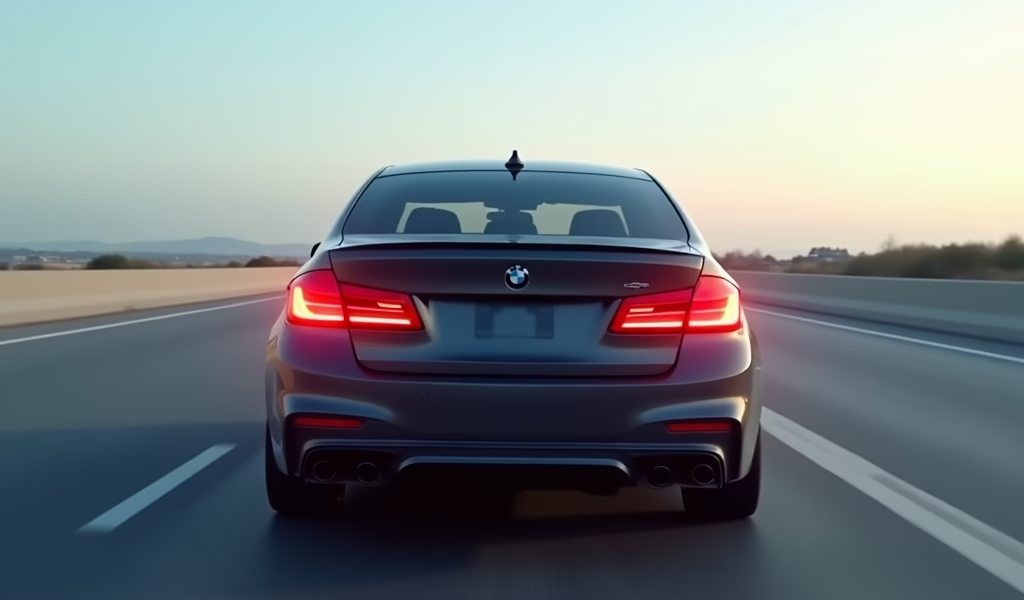Overview
This article provides five essential tips to avoid rear-end collisions: maintain proper following distance, keep your vehicle well-maintained, minimize distractions, practice defensive driving techniques, and know what to do after an accident occurs. The guide emphasizes that these precautionary measures can significantly reduce the risk of becoming part of the statistic that someone is involved in a rear-end collision every seven seconds in America.
Table of Contents
- Understanding Rear-End Accidents: The Basics
- Tip #1: Maintain Proper Following Distance
- Tip #2: Keep Your Vehicle Well-Maintained
- Tip #3: Minimize Distractions While Driving
- Tip #4: Master Defensive Driving Techniques
- Tip #5: What To Do After a Rear-End Accident
- Protecting Yourself on the Road
- Frequently Asked Questions
Understanding Rear-End Accidents: The Basics
Every seven seconds in America, someone’s day takes a turn for the worse with a rear-end collision. I’ve spent 20 years under the hood and behind the wheel, and let me tell you – most of these fender benders could be avoided with the right know-how.
Rear-end accidents make up nearly a third of all crashes that lead to serious injuries. As someone who’s fixed countless crumpled bumpers and seen the aftermath of these collisions, I can tell you they’re more than just an inconvenience – they’re life-changers. And when the dust settles, many folks find themselves searching for a reliable accident attorney to navigate the complicated aftermath.
The physics are simple: when a vehicle slams into another from behind, the occupants in the front car get jolted forward then snapped back – like a whip. That’s why even “minor” rear-enders at 10 mph can leave you with neck pain that lingers for months.
But here’s some good news – with the right preventive measures, you can dramatically reduce your chances of becoming another statistic. Let’s dive into five practical tips that have saved my customers thousands in repair bills and spared them the headache of dealing with insurance claims and hunting down a rear end accident lawyer.
Tip #1: Maintain Proper Following Distance
You know that tailgater who rides your bumper on the highway? Don’t be that person. The single most effective way to avoid rear-ending someone is giving yourself enough runway to stop when surprises pop up – and on the road, surprises are guaranteed.
The 3-second rule is your best friend here. When the car ahead passes a lamppost or road sign, start counting: “one-Mississippi, two-Mississippi, three-Mississippi.” If you reach that same marker before finishing your count, you’re following too close. It’s simple math that could save you thousands in repair bills and legal fees.
Now, I tell my customers to think of this 3-second buffer as your baseline in perfect conditions. When it’s raining? Double it to 6 seconds. Snowing or foggy? Triple it to 9 seconds. Your vehicle doesn’t care about your schedule when physics takes over.
According to research from the National Highway Traffic Safety Administration, proper following distance could prevent up to 80% of rear-end collisions. That’s not just a statistic – that’s thousands of people avoiding injury and the need for a rear end accident lawyer altogether.
Besides keeping you safe, maintaining proper distance keeps your wallet happy too. Tailgating tickets can run anywhere from $100 to over $250 depending on your state, not to mention the impact on your insurance premiums. Those few extra seconds of patience pay dividends.

Tip #2: Keep Your Vehicle Well-Maintained
In my shop, I see it all too often – folks driving around with brake lights that haven’t worked since the last presidential election. Your brake lights aren’t optional equipment; they’re your primary communication tool with the driver behind you. When they fail, you’re essentially driving with a “Please Hit Me” sign taped to your bumper.
Take 30 seconds each week to check all your lights while your car’s parked against a reflective surface like a garage door. Have someone help you verify your brake lights work while you press the pedal. This tiny habit has saved countless customers from becoming unwitting targets.
Your braking system itself needs regular attention too. I recommend having your brake pads, rotors, and fluid checked every 10,000-15,000 miles. Those few millimeters of brake pad material might be the difference between a close call and calling a qualified auto wreck lawyer.
Don’t forget about your tires – they’re literally where the rubber meets the road. Proper inflation, adequate tread depth, and regular rotation ensure optimal stopping distance. Did you know worn tires can increase your stopping distance by up to 87 feet at highway speeds? That’s often the difference between stopping safely and becoming the meat in a metal sandwich.
Keep all your maintenance records organized. If you’re ever rear-ended and the other driver claims your brake lights weren’t working, having documentation of recent service checks can be your best defense.
Tip #3: Minimize Distractions While Driving
That text message chime might seem urgent, but trust me – it’s not worth the risk. Looking at your phone for just five seconds while driving 55 mph means you’ve essentially traveled the length of a football field with your eyes closed. Let that sink in for a moment.
As someone who’s replaced plenty of bumpers and fenders, I’ve heard every excuse in the book. “I was just changing the song” or “I only looked down for a second” are common refrains from folks who ended up needing collision repair – or worse, medical attention and a motor vehicle accident lawyer.
The Virginia Tech Transportation Institute found that texting while driving increases your collision risk by 23 times. But your phone isn’t the only culprit. Eating that breakfast burrito, programming your GPS, or fishing for that toll pass that slid under the seat – all these distractions significantly increase your chances of missing that sudden brake light ahead.
Besides the physical consequences, the legal ramifications of distracted driving have intensified in recent years. Many states now impose fines exceeding $500 for first-time offenses, with potential license suspension for repeat offenders. If phone records indicate you were texting before rear-ending someone, your liability exposure increases dramatically – potentially affecting both insurance coverage and legal outcomes.
My practical advice? Set your phone to “Do Not Disturb” mode while driving, preset your navigation before putting the car in gear, and finish your meal before hitting the road. These simple habits could save you from becoming another statistic – and from needing a rear end accident lawyer.
Tip #4: Master Defensive Driving Techniques
After 20 years working with vehicles, I’ve learned that great drivers aren’t born – they’re made. Defensive driving isn’t about being paranoid; it’s about being prepared. It transforms you from a passive participant in traffic to an active navigator of potential hazards.
Train yourself to scan not just the vehicle directly ahead, but to look through their windows and beyond to spot slowing traffic, construction, or accidents well before they affect your immediate path. I tell my customers to imagine they have X-ray vision – you want to see problems developing before they reach you.
Always maintain awareness of your “escape routes” – those spaces to your sides where you could safely steer if sudden braking isn’t enough. This might mean intentionally positioning yourself in the right lane where a shoulder provides emergency space, or avoiding being boxed in between vehicles in heavy traffic.
Clear communication of your intentions gives drivers behind you precious extra seconds to react. Signal turns and lane changes well in advance, and tap your brakes lightly before more substantial braking when you notice traffic slowing ahead. These small courtesies can prevent the chain reaction that leads to rear-end collisions.
If you’re interested in improving your defensive driving skills, consider taking a National Safety Council defensive driving course. Many insurance companies offer discounts for completed courses, making it a win-win for your safety and your wallet.
Insurance companies and courts consistently view defensive driving practices as evidence of reasonable care. Drivers who can demonstrate they took reasonable precautions typically face more favorable liability determinations – a fact that could significantly impact financial responsibility for damages and reduce your need for a rear end accident lawyer.

Tip #5: What To Do After a Rear-End Accident
Despite your best efforts, accidents sometimes happen anyway. In those critical moments after impact, knowing exactly what to do can protect both your physical and financial well-being. As someone who’s helped countless customers through this process, I’ve developed a straightforward roadmap to follow.
First, prioritize safety. If possible, move vehicles to the shoulder and turn on your hazard lights to prevent secondary collisions. Check all parties for injuries and call 911 if medical attention is needed – some injuries, particularly whiplash, may not be immediately apparent but can worsen over time.
Documentation becomes your best friend in these situations. Exchange information with all drivers involved, including names, contact details, insurance information, and license plate numbers. Use your smartphone to photograph damage to all vehicles from multiple angles, the overall accident scene showing vehicle positions, road conditions, and any visible injuries.
Notify your insurance company promptly, typically within 24 hours, but provide only factual information about the accident. Avoid statements about fault or speculative comments about what happened – these could complicate your claim later and potentially increase your need for a rear end accident lawyer.
Speaking of legal help, if you’ve suffered injuries or significant vehicle damage, consider consulting with a qualified rear end accident lawyer within the first week following the collision. Many states have statutes of limitations that begin running immediately, and evidence gathering becomes more challenging as time passes.
Remember to document any medical treatment you receive, even if it seems minor at first. Neck and back injuries from rear-end collisions can take days or weeks to fully manifest. Keep a simple journal noting pain levels and how the injury affects your daily activities – this documentation can prove invaluable for both insurance claims and legal proceedings.
Protecting Yourself on the Road
The open road offers freedom, but with it comes responsibility. By maintaining proper following distance, keeping your vehicle in top condition, eliminating distractions, practicing defensive driving, and knowing what to do after a collision, you’ve built yourself a solid shield against one of the most common traffic hazards.
These aren’t just tips from a mechanic – they’re hard-earned wisdom from someone who’s seen the consequences of poor driving habits up close. The few extra seconds it takes to check your brake lights or the small effort required to put your phone away while driving could save you months of pain, thousands in repairs, and the hassle of finding a rear end accident lawyer.
Remember that even the most cautious drivers sometimes find themselves in accidents through no fault of their own. That’s why knowing what steps to take immediately after a collision is just as important as knowing how to prevent one in the first place.
Drive like everyone else on the road is distracted – because, frankly, many of them are. Your safety is too important to leave to chance or to trust that others are paying as much attention as you are. Stay safe out there, and may your journeys be uneventful in the best possible way.
Frequently Asked Questions
How soon after a rear-end accident should I contact a lawyer?
Ideally, consult with a rear end accident lawyer within the first week following the collision. This ensures evidence is preserved and applicable deadlines aren’t missed.
If I was hit from behind, am I automatically not at fault?
While the rear driver is typically presumed at fault, there are exceptions such as if you stopped suddenly without cause or had non-functioning brake lights. A rear end accident lawyer can help establish liability in complex cases.
What compensation can I receive after being rear-ended?
You may be entitled to compensation for medical expenses, lost wages, vehicle repairs, diminished vehicle value, and pain and suffering. The exact amount depends on injury severity, property damage extent, and your state’s laws.
Will my insurance rates increase if I’m rear-ended?
If you’re determined to be not at fault, your insurance rates typically should not increase. However, policies vary by company and state, so review your policy or consult your agent for specifics.
How much does a rear end accident lawyer cost?
Most rear end accident lawyers work on a contingency fee basis, meaning they only get paid if you receive compensation. The standard fee is 33-40% of the settlement amount, with no upfront costs.

